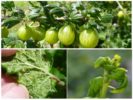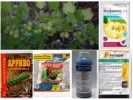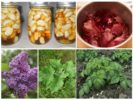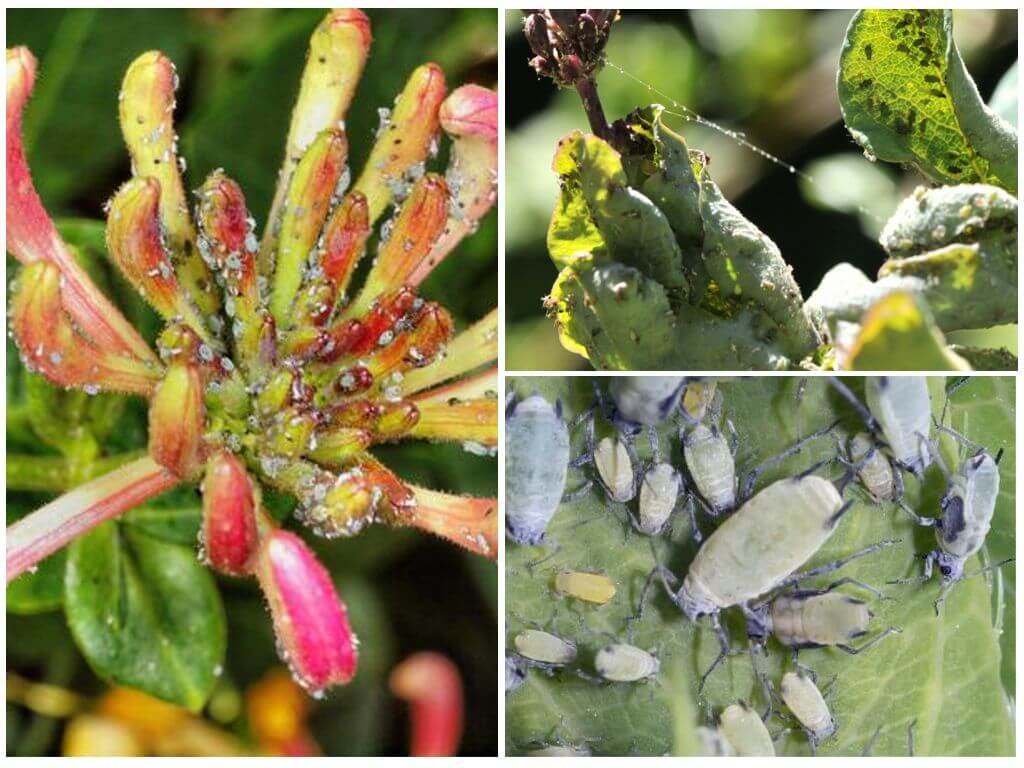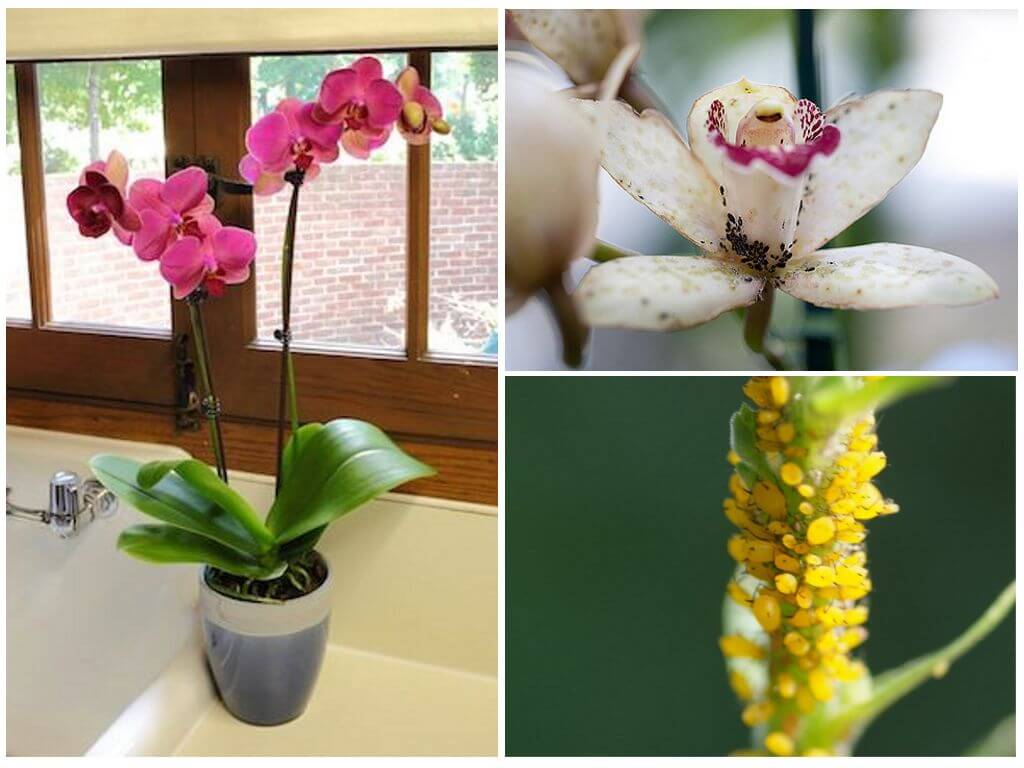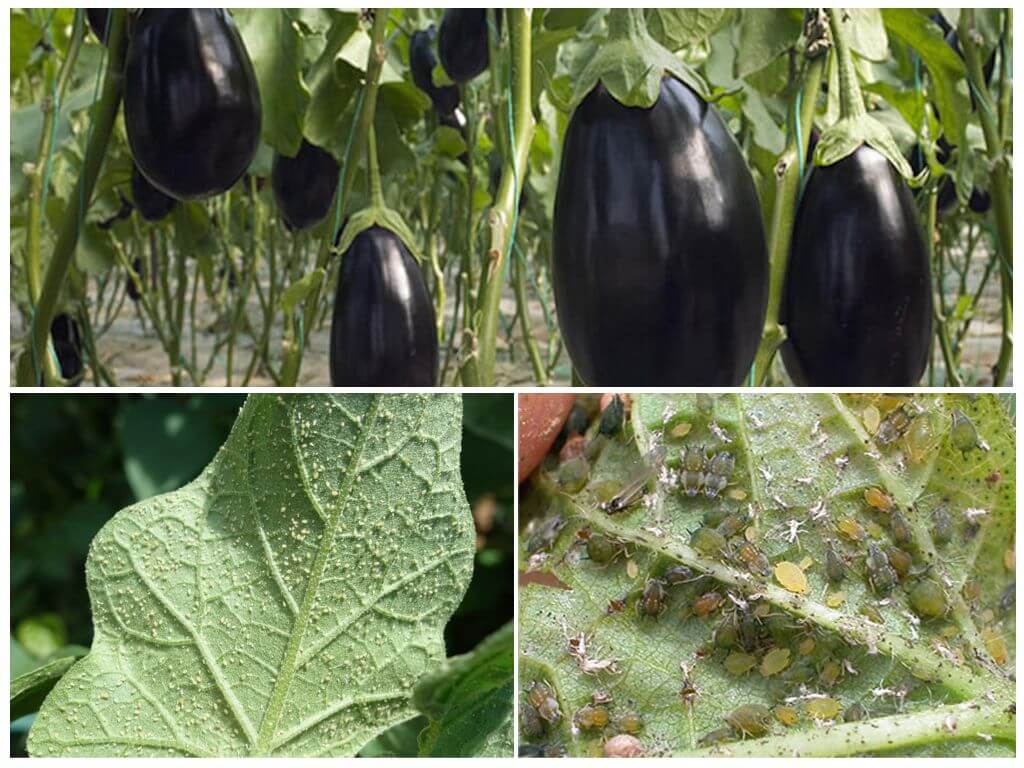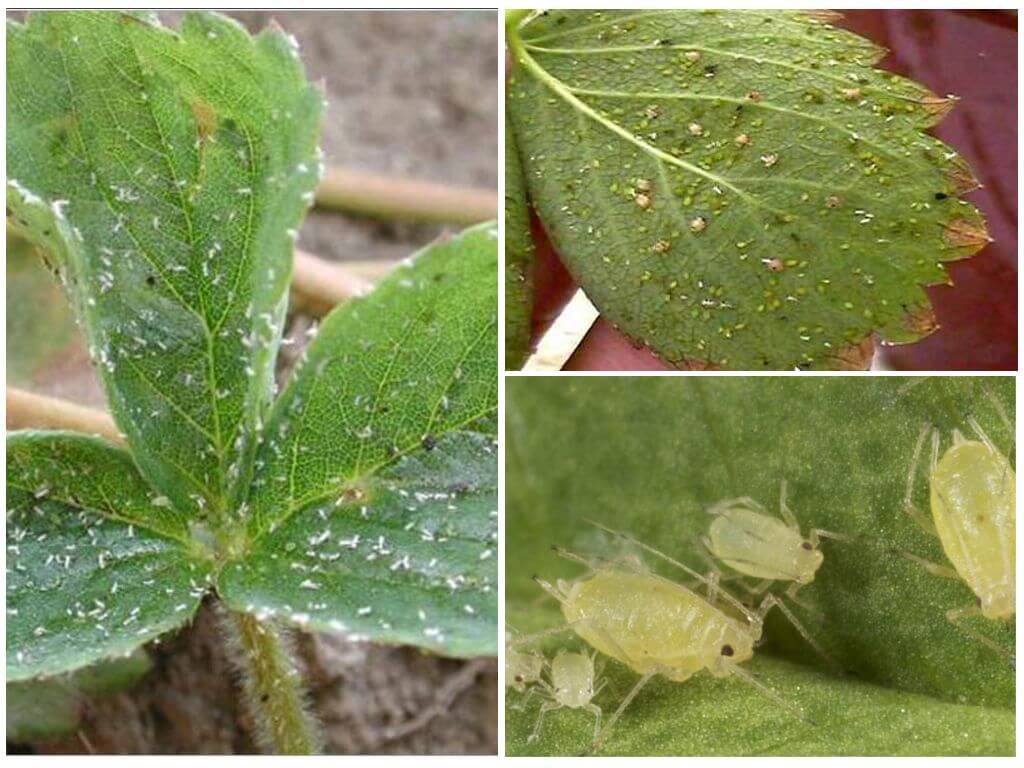- Gooseberry aphids
- Aphid Insecticides
- Fighting aphids with folk methods
Gooseberries - the taste of its berries has been familiar to many of us since childhood. They are consumed both fresh and cooked with compotes, jam, jam or jam. All this can not be seen if you do not care for the plant. With improper care, the gooseberry bush begins to give a low yield, and the presence of pests can even cause its death. One of these harmful insects is gooseberry shoot aphid. How and how to deal with aphids on gooseberries in order to preserve the harvest, many gardeners are concerned.
What is dangerous aphid
Gooseberry shoot aphid is a small insect whose body size does not exceed 2 mm (what aphids look like, can be seen in the photo below). A feature of the pest is its mass: from the eggs laid on the bark of the bush in spring, whole colonies of young individuals appear. They suck out the cell sap from the emerging buds, spreading to neighboring branches, and then the leaves. Why does the shoots that have lost moisture begin to deform, and the young leaves curl up in a lump, inside which the larvae settle.
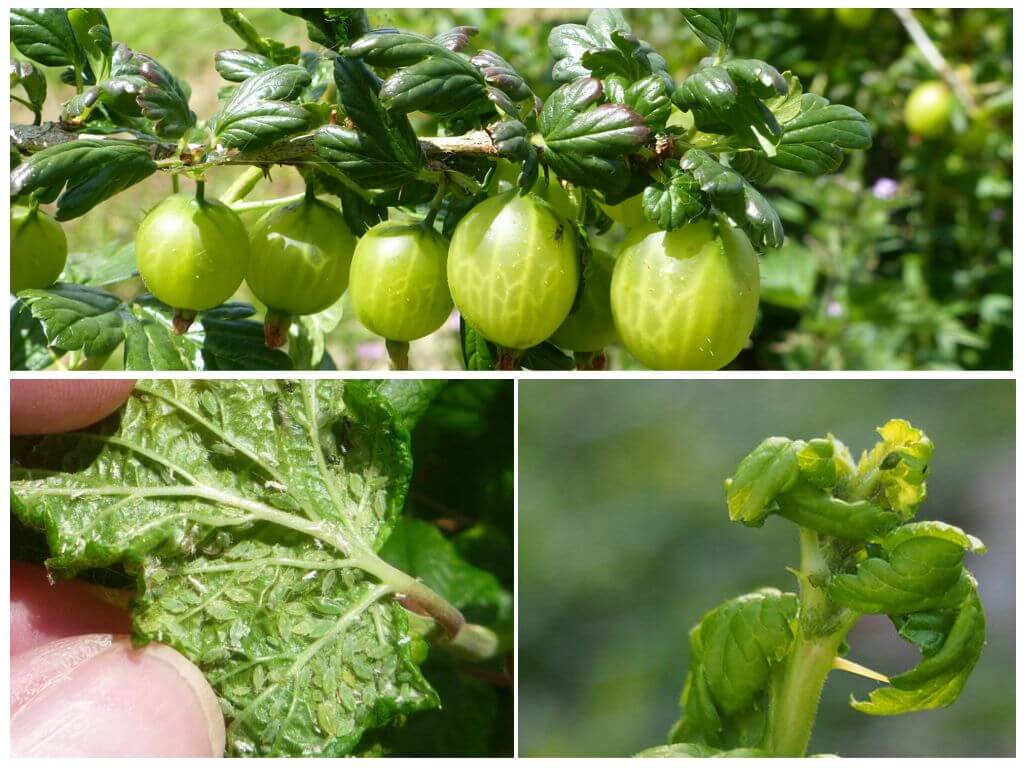
On a note!
At the end of the flowering of berry bushes, winged females begin to appear, flying over long distances and creating new colonies there. In the fall, they will again lay eggs, from which new offspring will appear in the spring.
Ways to fight
To preserve the crop, you need to know how and how to get rid of aphids on gooseberries. Measures to combat the gooseberry shoot aphid consist in a complex treatment with folk remedies and pesticides.
Chemicals
Pesticides are used before the appearance of leaves or immediately after flowering. After all, insecticidal components can accumulate in all parts of the bush. Moreover, the necessary protective level of concentration of the drug persists for 30 days. If this period coincides with the flowering time, then gooseberry pollen will be poisonous, resulting in the death of bees. While the insecticide in action is also unsafe gooseberry itself. Therefore, when using chemicals, strict adherence to the manufacturer's recommendations is necessary.
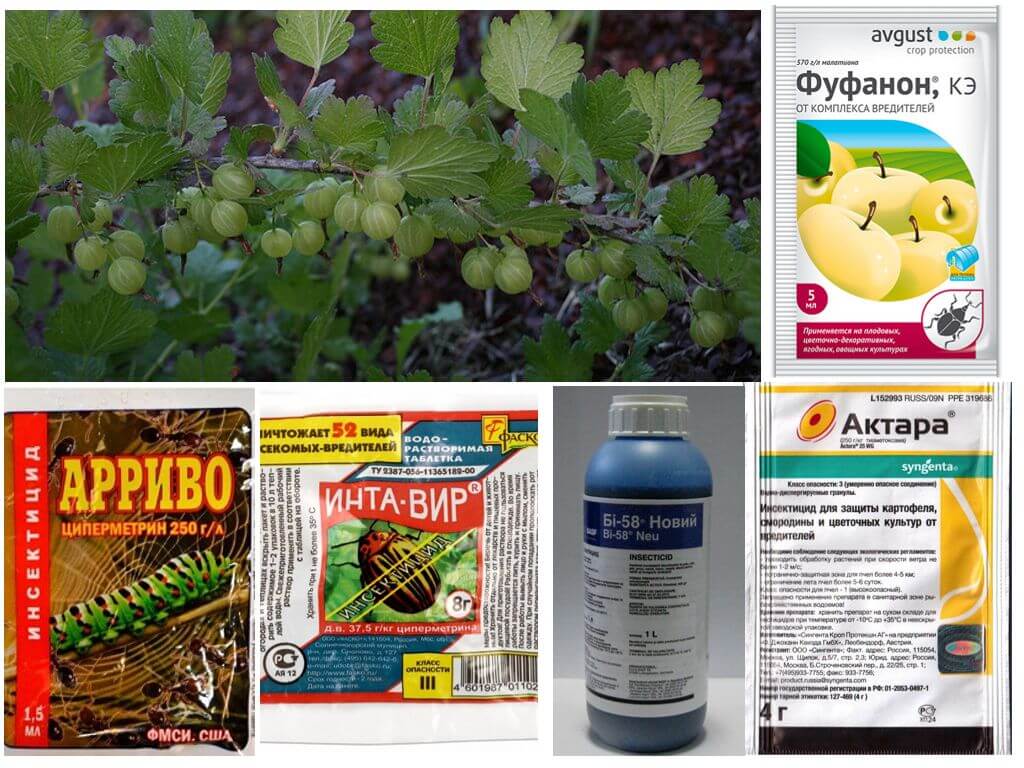
On a note!
Gooseberry chemicals it is possible only before the appearance of the first leaves and after harvesting.
The following drugs are most popular today:
- Actar remedy;
- Fitoverm;
- Spark;
- Tanrek;
- Fufanon;
- Arrivo
- Inta-Vir;
- Bi-58.
On a note!
Processing with any of these drugs should be carried out in the evening in the absence of wind and rain, since most insecticidal components lose their activity at high temperature.
Folk remedies
When the question arises, how to treat gooseberries from aphids, many gardeners still prefer folk remedies. After all, they can be used throughout the growing season, since safety is their main advantage. Folk remedies do not adversely affect the quality of the grown berries, however, if the concentration of the working components is exceeded, they can burn the leaves.
Most popular:
- ammonia;
- soap;
- soda;
- milk and iodine;
- Coca Cola;
- vinegar;
- celandine;
- vodka;
- Green soap;
- Birch tar;
- tobacco;
- boric acid.
Garlic
Effectively affects aphids garlic infusion. For its preparation, 200-300 g of finely chopped garlic is poured into 10 liters of water. The mixture is infused for several hours, after which it is filtered and used to spray the infected plant.
Onion peel
No less effective result is obtained when using onion peel. It is also used to make infusion. 200 g of onion husks are poured with a bucket of water and insisted for 5 days. The resulting infusion is filtered and used for spraying.
Potato tops
If aphid appeared on gooseberries, you can use another available remedy - potato tops. It is filled with water at the rate of 1.5 kg per 10 liters and insisted for 3-4 hours. Provided that the tops are already dry, they take it 2 times less. You can replace potato tops with tops of tomatoes.
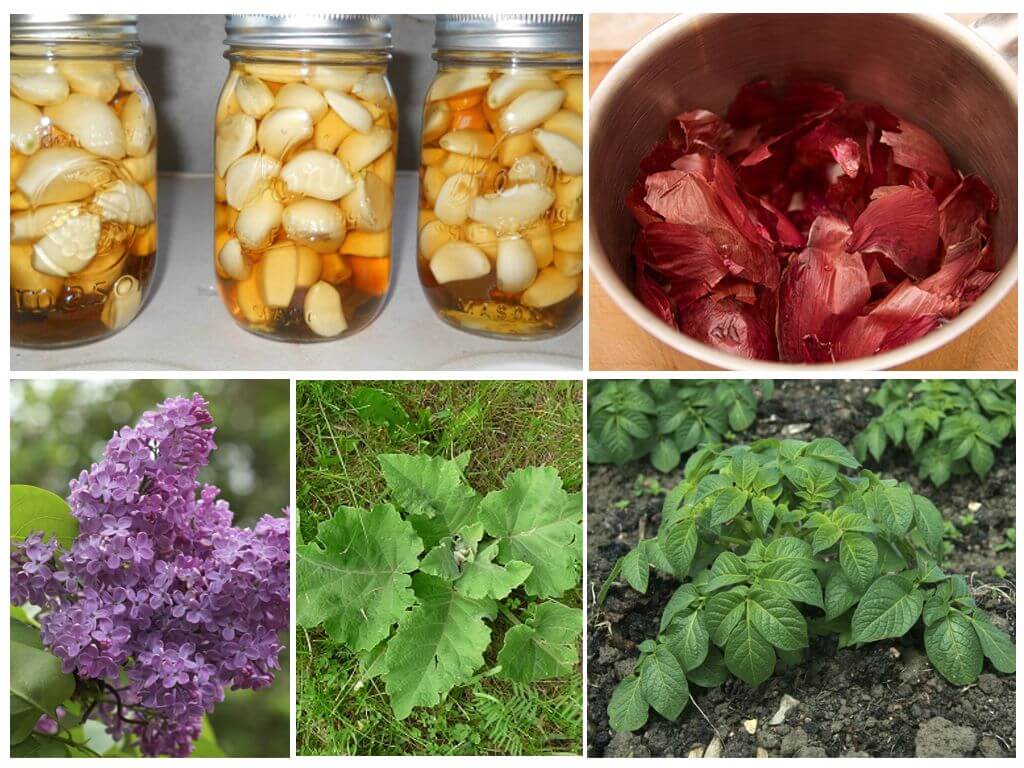
Burdock
Another unique folk remedy for aphids is burdock. 4 kg of fresh leaves are crushed and mixed with 10 l of water. The mixture is infused for 3 days, after which it is filtered and used to irrigate gooseberry bushes.
Lilac
Lilac has repelling properties. 6 kg of water take 1 kg of dried lilac flowers. The composition is simmered in a water bath for 45 minutes. The mixture is filtered and placed for a day in a place protected from sunlight. In the resulting infusion, add 20 g of grated or liquid soap and used for spraying.
Mustard
A good result in the fight against aphids gives mustard. 10 g of powder is insisted in a liter of water for two days. Water is added to the strained composition so that the total volume is 10 liters. This infusion is used to spray gooseberries from aphids throughout the growing season.
Ash
Gooseberry processing is also effective. ash solution. On a bucket of cold water you need 3 cups of ash. The next day, the composition is heated and dissolved in it 40 g laundry soap.
To completely get rid of aphids, it is necessary to process gooseberries several times with any of the above plants every 2 weeks.
